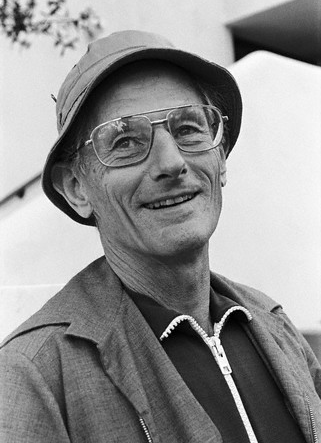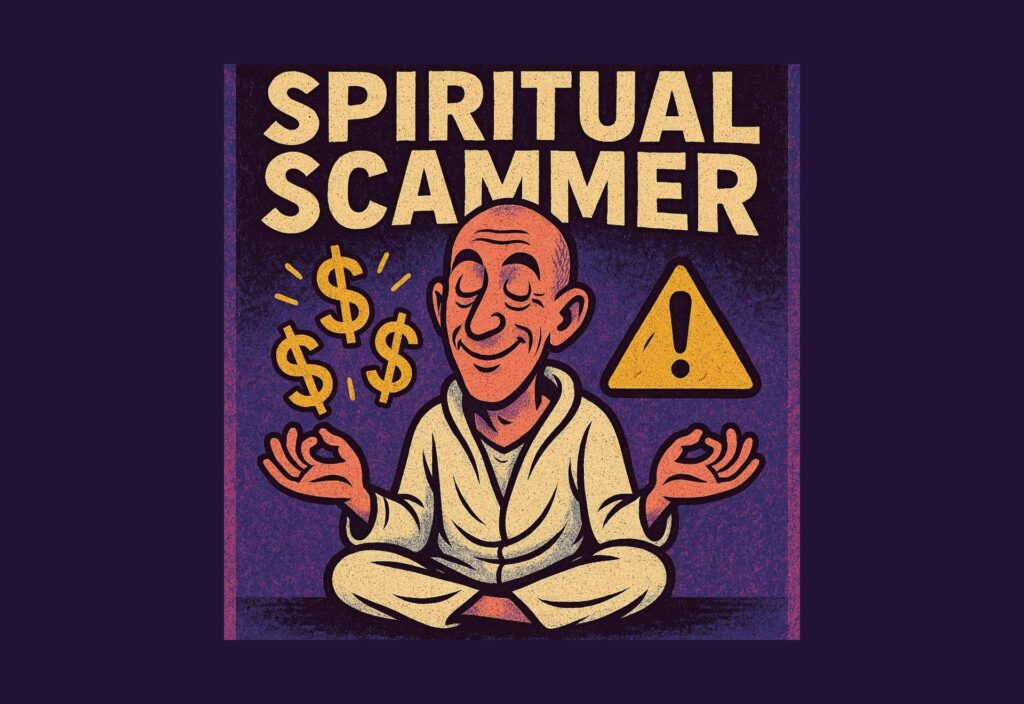The Scientist: An Evening with John C. Lilly by Jon Leon Torn is a multimedia solo performance piece that depicts the spiritual and experimental journey of one of the most creative and controversial thinkers of the 20th century. Lilly’s groundbreaking research on the brain led him to encounter government mind control conspiracies, mind-expanding drugs, sensory deprivation and inner space explorations, and inter-species communication with dolphins, whales, and silicon-based extraterrestrial life forms. Skeptics and believers alike will find food for thought in his remarkable and often harrowing story.
Jon is in New York to perform a workshop reading of The Scientist at the So-Fi Festival at Torn Page on Friday, January 4th (www.so-fi-festival.com). He took some time out of rehearsals to chat with his brother, actor-director Tony Torn, about the piece.
Tony Torn: Let’s talk about THE SCIENTIST, your piece about John C Lilly. Do you remember seeing the movie Day Of The Dolphin? I somehow remember seeing that in a movie theater as kids. And of course, we also saw Altered States together as teenagers. Both films dramatize specific elements of John Lilly’s life: Day of The Dolphin is inspired by his attempts to establish linguistic communication between humans and dolphins, and Altered States by his experiments with psychedelics in isolation tanks.
Jon Leon Torn: When I saw “Day of the Dolphin” I was pretty young, wasn’t so aware of the Lilly connection but I had probably picked up on dolphin intelligence from popular culture, TV shows like “In Search Of . . . “ etc. And this idea of dolphin intelligence was inspired by Lilly so I was aware of him indirectly. I just remember small details, mostly visual impressions. And the dolphins speaking English in the weird sing-songy way. All the tricked up Hollywood style additions too. A dead body is discovered in one of the tanks. And then the plot about the dolphins being trained to assassinate the President.
I remember one of the villains hearing the dolphin bomb being attached to the bottom of the boat and muttering “oh shit” before it blew…
Yes, a great fist-pumping “yeah!” moment. So Hollywood. Of course some of his early work on brain science and the Lilly wave was being scrutinized by the military for its utility for such things by the military, so it’s not completely off, just distorted to fit the demands of commercial cinema.
Most of my interest in Lilly didn’t come from those movies though. I read about him in Colin Wilson’s book Mysteries. Later on I met a friend of our sister, an artist who called herself Dolphina.
Yes, I had forgotten about her…
She wore a dolphin necklace and was very into dolphins. I knew that Lilly had some connection with that so I mentioned him. She frowned when she heard the name and said “he gave LSD to dolphins.” I didn’t know that. And I remember thinking to myself, there’s a story there.
As I read more of his books I felt the story of what actually happened as he told it was far more compelling than the fictionalized versions were. It’s mostly based on his autobiography “The Scientist: A Metaphysical Autobiography” but there’s parts of several of his writings in it. I’ve been working Philip Bailey from the Lilly estate and he gave me access to a lot of really great archival material. So there’s a documentary aspect to it. But the main idea was to have Lilly tell his own story.
So, in THE SCIENTIST you give voice to Lilly himself.
That’s the basic conceit, to have Lilly tell his own story to a contemporary audience. The subtitle is “An Evening with John Lilly” like he’s coming back to give a TED talk.
In THE SCIENTIST, you use those modulations in voice, from excited young scientist to trance like avatar, to express his dramatic character development.
Finding the voice was tricky because Lilly had an odd way of expressing himself. There’s a dry Midwestern humor in a lot of his stuff, particularly his live appearances, that was important to nail down.
That dry humor really helps make Lilly sympathetic, especially as things get wild.
That humor comes out mostly in his personal appearances, not in his writing so much. There’s a great public access interview he gave in the 80s where he’s wearing a Davy Crockett coonskin cap, and he has this merry, puckish look in his eyes. I’m trying to keep some of that in, to be true to what I felt is The Holy Fool side of his nature as well.
In The Scientist, he’s writing his own autobiography in the voice of an alien being, his true extraterrestrial nature as he saw it. So he writes it in a kind of strange, disconnected flat way that’s totally intentional. This was after he started experimenting with Ketamine. His earlier books, like The Center of the Cyclone, were written much more in a pop culture communicative mode. Finding a place where these two voices could co-exist was one of the main challenges.
“The Scientist” as I indicated before is a weird book. It starts with the birth of the universe, only gradually gets to his own birth on planet Earth, and then takes a very long time to get to tanks, dolphins, K etc. It seems to be an attempt by Lilly to reset and reframe what got him into all of that stuff, how he was kind of on a mission, directed by extraterrestrials, to introduce humanity to other intelligences that existed inside and outside the planet. Once you understand that he had this drive towards inquiry and exploration at all costs, it explains how he kept pushing himself and others to learn more and more about consciousness. I thought it would be more helpful for people’s understanding of him to focus on this scientific mission than as some spiritual guru.
There are people who question the ethics of Lilly’s work in general and with dolphins in particular…thoughts?
Coming out of this institutional scientific worldview, he initially saw dolphins as test subjects, not sentient creatures that we could learn from. The show traces that evolution. The point is not to forgive his ethical lapses but try to learn from them, as I feel he ultimately did.
You also play music in the piece, performing ambient style improvisations on keyboard in a duet with Freddie Katz on guitar. How does music affect the performance?
I want the show to be a kind of homage to the multimedia performances from that era, with images and sound that evoke mind expansion. At the moment most of the music is me and Freddie improvising over set themes. I have a couple of keyboard patches I use but mostly he’s playing off my voice and vice versa.

Photo by Jody Christopherson
After Lilly experimented with LSD while working with Dolphins, he got deeply involved with ketamine, taking it on almost a daily basis. Have you ever tried it?
Somebody offered me a line of Ketamine at a party once. I snorted it and it made half of my face numb . . . that was it. Not ideal conditions to go outside my body and communicate with aliens, I would think.
I also tried it only once, and it did give me the feeling like I was controlling my body from slightly outside and above, like in a video game. It’s understandable to me how it could wire you into a more analytic, mechanistic point of view. You’ve done personal research in isolation tanks?
I have floated, and while I didn’t reach the profound states that Lilly did, his discussion of the process of working past distractions and internal tension into a more profound state of inner connection definitely vibed with my own experiences. It’s kind of like meditation where you need to work at being mindful and present and avoiding self-talk, but more intense, because it’s not just your mind but your entire body that’s going through that process. Minor things become huge. Once I started a float but it seemed uncomfortably warm and when I closed my eyes I saw myself surrounded by flames. It turned out that the person before me had wanted some sauna like experience and had asked them to pump up the heat. So that was a learning moment for me on making sure it was happening in a controlled environment.
Have you ever felt an awareness of what Lilly calls “solid state intelligence”? Is it paranoia or do you think it’s a serious concern? How does it relate to the concept of “singularity”
So, while taking Ketamine, Lilly believed he was being contacted by an alien intelligence that identified itself as a representative of solid state life forms in the universe that were planning on displacing water-based beings on Earth by making common cause with our artificial intelligence machines. This idea has been, like so many of his core insights, translated into mass-market entertainments like The Matrix and the Terminator movies. Logically it makes a certain amount of sense that the universe would be more hospitable to such forms of life than ours. A lot of the posthuman philosophy seems to accept this as a fact and feel that we need to go beyond our water-based existence in order to survive.
With most of his experiences, I’m agnostic as to their truth or falsity but trying to be as true as I can to the experiences he had. Whether or not you accept the reality of what he experienced it was real to him. And that’s the main intention behind me presenting his experiences for people in this way, in this format, from this perspective.
***
The Scientist will be presented as a workshop staged reading, with Jon Torn accompanied by guitarist Freddie Katz, on Friday, January 4th at 7pm. Part of the So-Fi Festival at Torn Page, 435 W. 22nd Street, NY NY. For tickets and information please go to so-fi-festival.com, or tornpage.org.















